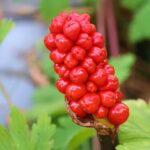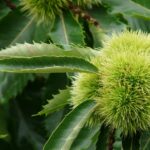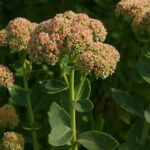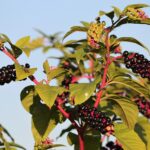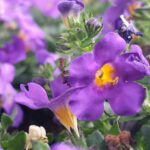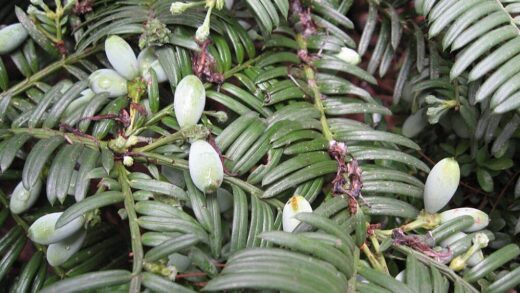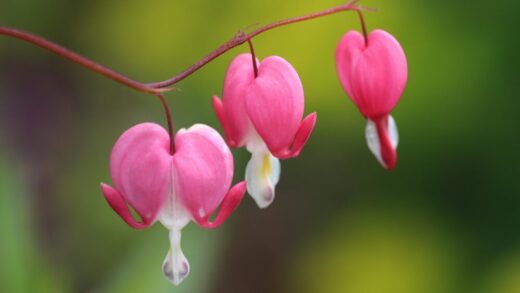The almond shrub, also known as Prunus triloba, is one of the most charming jewels of spring gardens, catching the eye with its abundant, pink blossoms. However, for the plant to shine in its most beautiful form year after year, professional autumn preparation and careful overwintering are essential. Applying the correct overwintering techniques not only guarantees the abundance of the following year’s blooms but also establishes the long-term health and vitality of the plant. Young specimens and shrubs planted in locations with unfavorable microclimates require particular attention before and during the frosty months.
Autumn nutrient replenishment is crucial for increasing the plant’s winter hardiness. During this period, the use of potassium-rich fertilizers is recommended, as this element contributes to strengthening cell walls and enhancing frost resistance. Nitrogen-containing products should be avoided in the autumn because they stimulate fresh, tender shoot growth that would easily fall victim to winter frosts. As a natural alternative, spreading compost or wood ash also provides an excellent source of potassium for the plant. The final nutrient application should be done before the onset of persistent frosts.
Adequate water supply is also an essential part of autumn preparation, often referred to as “watering in” for winter. Optimal soil moisture protects the root system from winter desiccation, a common consequence of frosty, windy weather. The amount of watering should be gradually reduced as the cold weather approaches and then completely stopped before the ground freezes solid. Overwatering and stagnant water can be at least as harmful as desiccation, as the excess water turning to ice can physically damage the roots.
The location of the almond shrub in the garden greatly influences the success of its overwintering. Freshly planted, young shrubs are much more sensitive than their stronger counterparts that have been in place for several years. It is advisable to choose a sheltered location, free from frost pockets and not exposed to the force of prevailing winter winds, right from the time of planting. Different spots in a garden can have varying microclimates, and these small differences can be decisive for the plant’s survival.
Protection of young and container-grown plants
Young almond shrub specimens require special care during their first few winters, as their root systems have not yet penetrated deep enough, and the bark on their trunks is thinner. These plants are much more vulnerable to harsh winter weather, so special attention must be paid to their protection for the first two to three years. This initial investment of energy ensures the plant’s subsequent vigorous growth and abundant flowering. Neglecting proper protection can cause irreversible damage to the young shrub.
More articles on this topic
The most effective way to protect the root zone is through mulching. Straw, dry leaves, pine bark, or special horticultural fleece are excellent for this purpose. The ideal thickness of the mulch layer is about 10-15 centimeters, which acts as an insulator, protecting the top layer of soil and the roots within it from sudden temperature fluctuations and deep freezing. The mulch should be spread around the base of the plant after the first light frosts but before the hard, persistent cold sets in.
Protecting the trunk and crown of young shrubs is also crucial. The trunk can be wrapped with burlap, reed mats, or a special trunk protector to prevent frost cracking and sunscald. For smaller bushes, a cage-like structure made of wire mesh can be set up around the plant and filled with dry leaves. Gently tying the branches of the shrub together prevents them from breaking under the weight of heavy snow cover.
Overwintering almond shrubs grown in containers requires the most diligence, as their root systems are completely exposed to the ambient temperature. The best solution is to move the plant to an unheated but frost-free location, such as a garage, shed, or cold greenhouse, for the winter. Even then, care must be taken to keep the soil slightly moist, avoiding complete desiccation and overwatering. If the plant remains outdoors, the pot must be insulated by wrapping it in bubble wrap and burlap, and placing it on a wooden board to lift it off the frozen ground.
Overwintering older, established plants
Older almond shrubs that have been living in the garden for several years generally tolerate local winters well and require less intensive care than younger ones. Their extensive root systems and thicker, woody stems provide natural protection against the cold. However, extreme weather conditions, such as exceptionally low temperatures or freezing rain, can still affect these strengthened plants. Vigilance and preventive care are therefore not to be neglected even for older specimens.
More articles on this topic
A thick, wet layer of snow can place a heavy burden on the shrub’s branches, which can bend or even break, permanently damaging the plant’s shape. After a heavy snowfall, it is advisable to gently shake or brush off the excess snow from the branches, especially the main ones. Ice storms are even more dangerous; although removing the ice layer can cause more harm than good, prevention can help a lot. It is worthwhile to remove slushy snow from the branches before it freezes.
Preventing winter desiccation and sunscald is also an important task. The almond shrub is deciduous, but its trunk and branches can still lose moisture on sunny, windy winter days. Sunscald occurs when the winter sun warms the trunk, and then the temperature plummets at night, causing the bark to crack. Although this phenomenon is less common on multi-stemmed shrubs, it can cause serious problems for standard tree-form varieties, making trunk protection a viable option even for mature plants in exposed locations.
Post-flowering pruning also plays a role in winter preparation. Although the main formative pruning is done in spring, immediately after flowering, removing damaged, diseased, or dead branches in late autumn is particularly beneficial. This cleanup pruning reduces potential entry points for infections during the dormant season. It also improves air circulation within the crown, which can help prevent fungal diseases that might develop under snow cover.
Assessing winter damage and spring tasks
One of the first spring tasks is a thorough inspection of the plant after the snow has melted. As winter ends, the shrub must be checked for broken branches, frost cracks on the trunk, and any damage caused by rodents that may have girdled the base. Assessing the condition of the flower buds is also an important task that can predict the quality of the expected bloom. This initial inspection determines the necessary spring maintenance tasks.
Parts that have suffered winter damage must be professionally removed. Any branch that is clearly dead, broken, or diseased should be pruned back to healthy, living wood. This work is best done in early spring, before the buds break. Using clean, sharp, and sterilized pruning shears is essential for quick wound healing and to prevent infections. This corrective pruning helps to shape the plant for the new growing season.
Revitalizing the plant after its winter rest also requires care. As soon as the danger of hard frost has passed, the winter mulch should be gradually removed from around the base of the plant to allow the soil to warm up. A light application of a balanced, complex fertilizer can provide the necessary nutrients for a strong start to the spring. Resuming a regular watering schedule is also essential as the plant begins to produce new leaves and flowers.
Long-term observation and learning from experience are crucial. Every winter provides a lesson about the garden’s specific microclimate and the plant’s reactions. Observing how the almond shrub weathers each winter helps to refine the overwintering strategy for the coming years. Perhaps a different planting location, a thicker layer of mulch, or more effective wind protection is needed to achieve optimal health and a spectacular spring floral display. This adaptive care is the hallmark of a knowledgeable gardener.







